The new app is called watchGPT and as I tipped off already, it gives you access to ChatGPT from your Apple Watch. Now the $10,000 question (or more accurately the $3.99 question, as that is the one-time cost of the app) is why having ChatGPT on your wrist is remotely necessary, so let’s dive into what exactly the app can do.
NEWS
Google December Product Reviews Update Affects More Than English Language Sites? via @sejournal, @martinibuster
Google’s Product Reviews update was announced to be rolling out to the English language. No mention was made as to if or when it would roll out to other languages. Mueller answered a question as to whether it is rolling out to other languages.
Google December 2021 Product Reviews Update
On December 1, 2021, Google announced on Twitter that a Product Review update would be rolling out that would focus on English language web pages.
Our December 2021 product reviews update is now rolling out for English-language pages. It will take about three weeks to complete. We have also extended our advice for product review creators: https://t.co/N4rjJWoaqE
— Google Search Central (@googlesearchc) December 1, 2021
The focus of the update was for improving the quality of reviews shown in Google search, specifically targeting review sites.
A Googler tweeted a description of the kinds of sites that would be targeted for demotion in the search rankings:
“Mainly relevant to sites that post articles reviewing products.
Think of sites like “best TVs under $200″.com.
Goal is to improve the quality and usefulness of reviews we show users.”
Advertisement
Continue Reading Below
Google also published a blog post with more guidance on the product review update that introduced two new best practices that Google’s algorithm would be looking for.
The first best practice was a requirement of evidence that a product was actually handled and reviewed.
The second best practice was to provide links to more than one place that a user could purchase the product.
The Twitter announcement stated that it was rolling out to English language websites. The blog post did not mention what languages it was rolling out to nor did the blog post specify that the product review update was limited to the English language.
Google’s Mueller Thinking About Product Reviews Update


Product Review Update Targets More Languages?
The person asking the question was rightly under the impression that the product review update only affected English language search results.
Advertisement
Continue Reading Below
But he asserted that he was seeing search volatility in the German language that appears to be related to Google’s December 2021 Product Review Update.
This is his question:
“I was seeing some movements in German search as well.
So I was wondering if there could also be an effect on websites in other languages by this product reviews update… because we had lots of movement and volatility in the last weeks.
…My question is, is it possible that the product reviews update affects other sites as well?”
John Mueller answered:
“I don’t know… like other languages?
My assumption was this was global and and across all languages.
But I don’t know what we announced in the blog post specifically.
But usually we try to push the engineering team to make a decision on that so that we can document it properly in the blog post.
I don’t know if that happened with the product reviews update. I don’t recall the complete blog post.
But it’s… from my point of view it seems like something that we could be doing in multiple languages and wouldn’t be tied to English.
And even if it were English initially, it feels like something that is relevant across the board, and we should try to find ways to roll that out to other languages over time as well.
So I’m not particularly surprised that you see changes in Germany.
But I also don’t know what we actually announced with regards to the locations and languages that are involved.”
Does Product Reviews Update Affect More Languages?
While the tweeted announcement specified that the product reviews update was limited to the English language the official blog post did not mention any such limitations.
Google’s John Mueller offered his opinion that the product reviews update is something that Google could do in multiple languages.
One must wonder if the tweet was meant to communicate that the update was rolling out first in English and subsequently to other languages.
It’s unclear if the product reviews update was rolled out globally to more languages. Hopefully Google will clarify this soon.
Citations
Google Blog Post About Product Reviews Update
Product reviews update and your site
Google’s New Product Reviews Guidelines
Write high quality product reviews
John Mueller Discusses If Product Reviews Update Is Global
Watch Mueller answer the question at the 14:00 Minute Mark
[embedded content]Facebook Faces Yet Another Outage: Platform Encounters Technical Issues Again

Uppdated: It seems that today’s issues with Facebook haven’t affected as many users as the last time. A smaller group of people appears to be impacted this time around, which is a relief compared to the larger incident before. Nevertheless, it’s still frustrating for those affected, and hopefully, the issues will be resolved soon by the Facebook team.
Facebook had another problem today (March 20, 2024). According to Downdetector, a website that shows when other websites are not working, many people had trouble using Facebook.
This isn’t the first time Facebook has had issues. Just a little while ago, there was another problem that stopped people from using the site. Today, when people tried to use Facebook, it didn’t work like it should. People couldn’t see their friends’ posts, and sometimes the website wouldn’t even load.
Downdetector, which watches out for problems on websites, showed that lots of people were having trouble with Facebook. People from all over the world said they couldn’t use the site, and they were not happy about it.
When websites like Facebook have problems, it affects a lot of people. It’s not just about not being able to see posts or chat with friends. It can also impact businesses that use Facebook to reach customers.
Since Facebook owns Messenger and Instagram, the problems with Facebook also meant that people had trouble using these apps. It made the situation even more frustrating for many users, who rely on these apps to stay connected with others.
During this recent problem, one thing is obvious: the internet is always changing, and even big websites like Facebook can have problems. While people wait for Facebook to fix the issue, it shows us how easily things online can go wrong. It’s a good reminder that we should have backup plans for staying connected online, just in case something like this happens again.
NEWS
We asked ChatGPT what will be Google (GOOG) stock price for 2030

Investors who have invested in Alphabet Inc. (NASDAQ: GOOG) stock have reaped significant benefits from the company’s robust financial performance over the last five years. Google’s dominance in the online advertising market has been a key driver of the company’s consistent revenue growth and impressive profit margins.
In addition, Google has expanded its operations into related fields such as cloud computing and artificial intelligence. These areas show great promise as future growth drivers, making them increasingly attractive to investors. Notably, Alphabet’s stock price has been rising due to investor interest in the company’s recent initiatives in the fast-developing field of artificial intelligence (AI), adding generative AI features to Gmail and Google Docs.
However, when it comes to predicting the future pricing of a corporation like Google, there are many factors to consider. With this in mind, Finbold turned to the artificial intelligence tool ChatGPT to suggest a likely pricing range for GOOG stock by 2030. Although the tool was unable to give a definitive price range, it did note the following:
“Over the long term, Google has a track record of strong financial performance and has shown an ability to adapt to changing market conditions. As such, it’s reasonable to expect that Google’s stock price may continue to appreciate over time.”
GOOG stock price prediction
While attempting to estimate the price range of future transactions, it is essential to consider a variety of measures in addition to the AI chat tool, which includes deep learning algorithms and stock market experts.
Finbold collected forecasts provided by CoinPriceForecast, a finance prediction tool that utilizes machine self-learning technology, to anticipate Google stock price by the end of 2030 to compare with ChatGPT’s projection.
According to the most recent long-term estimate, which Finbold obtained on March 20, the price of Google will rise beyond $200 in 2030 and touch $247 by the end of the year, which would indicate a 141% gain from today to the end of the year.
Google has been assigned a recommendation of ‘strong buy’ by the majority of analysts working on Wall Street for a more near-term time frame. Significantly, 36 analysts of the 48 have recommended a “strong buy,” while seven people have advocated a “buy.” The remaining five analysts had given a ‘hold’ rating.
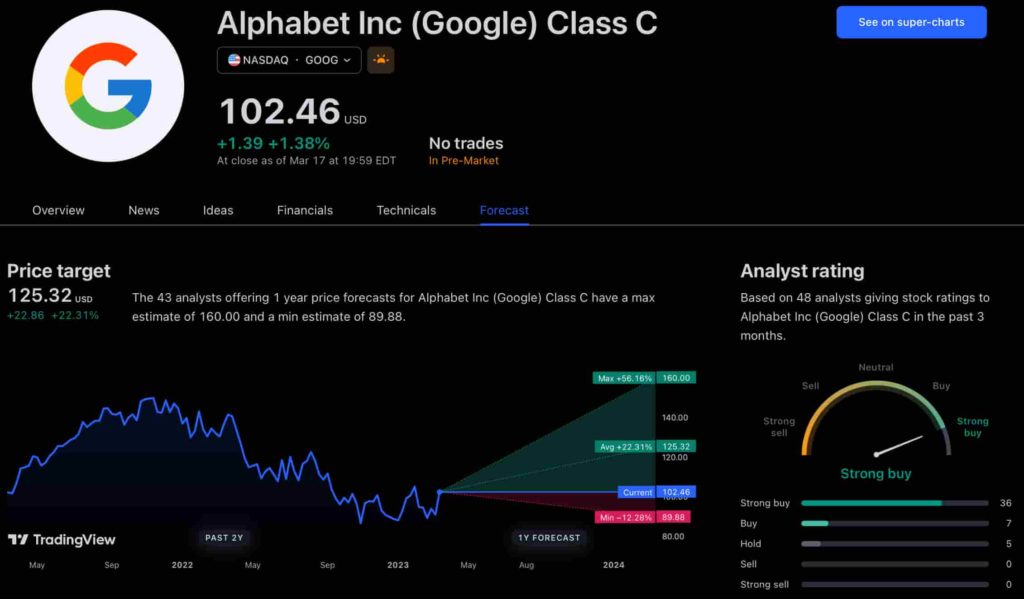
The average price projection for Alphabet stock over the last three months has been $125.32; this objective represents a 22.31% upside from its current price. It’s interesting to note that the maximum price forecast for the next year is $160, representing a gain of 56.16% from the stock’s current price of $102.46.
While the outlook for Google stock may be positive, it’s important to keep in mind that some potential challenges and risks could impact its performance, including competition from ChatGPT itself, which could affect Google’s price.
Disclaimer: The content on this site should not be considered investment advice. Investing is speculative. When investing, your capital is at risk.
NEWS
This Apple Watch app brings ChatGPT to your wrist — here’s why you want it
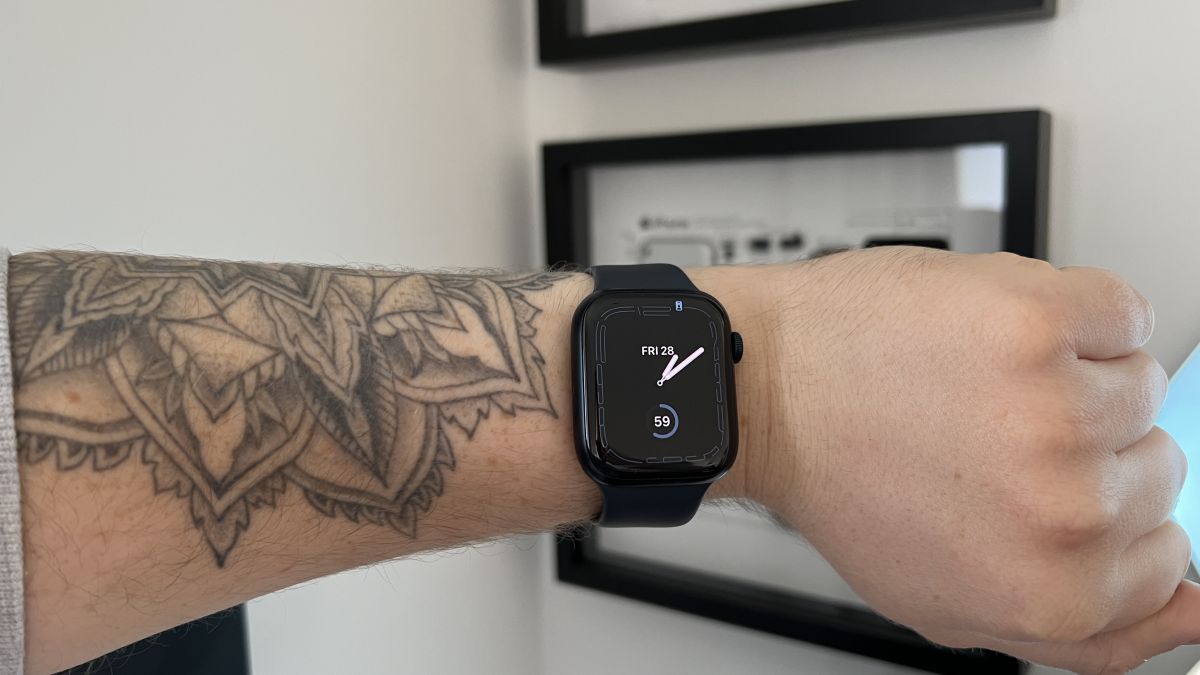
ChatGPT feels like it is everywhere at the moment; the AI-powered tool is rapidly starting to feel like internet connected home devices where you are left wondering if your flower pot really needed Bluetooth. However, after hearing about a new Apple Watch app that brings ChatGPT to your favorite wrist computer, I’m actually convinced this one is worth checking out.
-

 MARKETING6 days ago
MARKETING6 days agoEffective Communication in Business as a Crisis Management Strategy
-
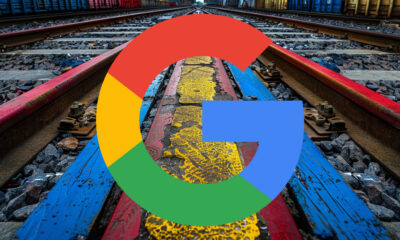
 SEARCHENGINES7 days ago
SEARCHENGINES7 days agoGoogle Won’t Change The 301 Signals For Ranking & SEO
-
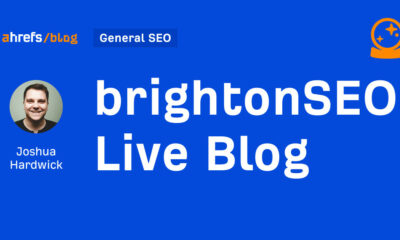
 SEO6 days ago
SEO6 days agobrightonSEO Live Blog
-

 PPC7 days ago
PPC7 days ago9 Ecommerce Trends to Boost Your Business in 2024
-

 SEO4 days ago
SEO4 days agoGoogle March 2024 Core Update Officially Completed A Week Ago
-

 SEO7 days ago
SEO7 days agoHow To Write ChatGPT Prompts To Get The Best Results
-
SEARCHENGINES5 days ago
Daily Search Forum Recap: April 25, 2024
-
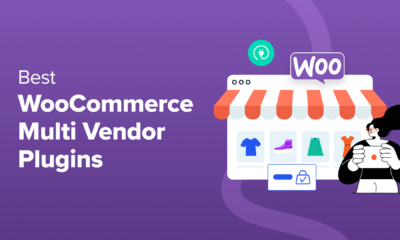
 WORDPRESS5 days ago
WORDPRESS5 days ago9 Best WooCommerce Multi Vendor Plugins (Compared)
















You must be logged in to post a comment Login